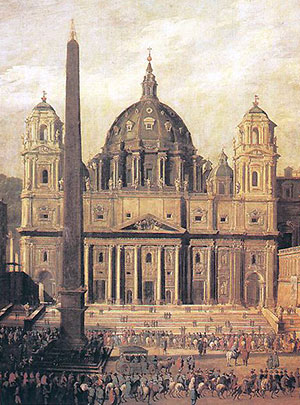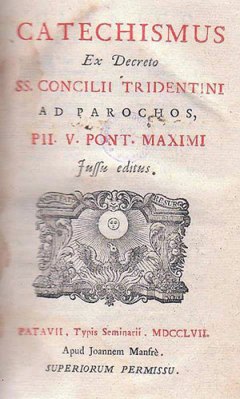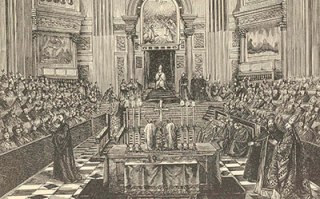Tags
Beowulf, Bog, Christianity, death, Heaney, Ireland, Malcolm Guite, Old English, Poetry, Prince Albert National Park, Seamus Heaney, St. John of the Cross, Tribute
Conflict makes for good writing – or so goes the theory – and so our assignment in the intro to writing course I took to get into university (because I was homeschooled and the process was less than clear at that time) was to write about something we were conflicted about. I, being a little new to the production (though not the thought processes) of papers submitted a paper called, “You, My Friend, Need Bogs.” I have, I hope, since learned to write better titles. But the feedback I got was not on the title, but on the content. I had to do a rewrite because there was not enough conflict. My problem was that I chose the topic expecting there to be a struggle – between everything I love about bogs, and the feeling that I ought not to because being fascinated by a place where dead things don’t decay and the plants kill things does not jar well with a precious moments conception of Christianity. But I could not help myself. I really did love bogs.
The bog I loved in particular was a bog in Northern Saskatchewan called, plainly enough, Boundary Bog, being as it is on the boundary of Prince Albert National Park. I have visited this bog almost yearly, when we go up to the park for our family holiday; I have even hiked around it (off the boardwalk) in the very rare dry season when the sphagnum was dry enough that we did not sink. What I liked (and still like) about the bog is its indifference to progress – and I mean this as the highest of compliments. Stupid people could go around doing their stupid politics and saying stupid things about God, and many people could react and make big deals about things etc., and the bog didn’t care. What was preserved there didn’t change; it had been there long before, and would be there long after our own little dramas that we either took seriously or became too cynical to take seriously, as the case might be. The bog was for me a somewhat morbid version of the justly famous passage from The Lord of the Rings in which Sam sees the eternal light of a star and it reminds him that there is a world beyond Mordor.
Why all this about bogs? Because in this post I want to honor a poet whose chief accomplishment was digging in bogs. I am admittedly a latecomer to Seamus Heaney’s poetry, having as I do a general aversion to modern poets. But when I found him, I realized that here was someone who could explain the tension: why the conflict I thought I was writing about in my essay – the alleged conflict between Christian hope and a love of bogs – was in fact not a conflict.
My purpose here is not to analyze in detail all of Heaney’s bog poetry; that has been done elsewhere. What I do want to suggest, though, is that where most modern poets spend their time focusing on the present moment – either praising or lamenting an inescapable societal “progress” – Heaney dug; the place his poetry starts is always the piece of ground he stands on. What he does is different from a merely sentimental or escapist desire to go back to “the good old days.” Rather, he forces us to look at the bodies in the ground we have built and sold on. He himself sometimes seems as much at a loss about what to do with these bodies as we are – whether these bodies be literal bog sacrifices, or the metaphorical body of Ireland he wrote so much about. But he insists we must look at them. Try as we might to cover them with the tarp of modern progress, the bog, like death, will get us in the end – and its bodies will ever be our companions.
This I knew, or at least there was a part of me that felt it intuitively in my love for bogs. What Heaney does, however, is articulate through poetry the Catholic theological vision that lies behind this love. There are two particular ways I see this working out in his poetry. The first is in his interest in Old English poetry, for, in many ways, the Old English poetic tradition is grubby and earthy and bog-like. Try as we might to overwrite its foundations with all manner of Norman, scholastic, and imperial inventions, it remains a space of quiet darkness touching earth. I do not say this to be entirely pejorative; indeed, I have a deep appreciation for the scholastics. But when I am looking for a poetry and a theology that is equal to the raggedness and darkness of life, it is not to Arthurian legend that I turn, nor even (magnificent though he is) to Dante – it is to Old English poetry. Old English poetry, we might say, is the boggy morass over which the rest of English literary tradition is built – and the exploration of this boggy morass is chalk full of theology. Heaney, I think, saw this, that Old English tradition was a way of facing the darkness head on without succumbing to nihilism, and it could do this just to the degree that it tempered Northern pessimism with Christian hope. I can put it no better than Heaney himself in the prophetic lines from his poem, “North”:
“Lie down
in the word-hoard, burrow
the coil and gleam
of your furrowed brain.
Compose in darkness.
Expect aurora borealis
in the long foray
but no cascade of light.
Keep your eye clear
as the bleb of the icicle,
trust the feel of what nubbed treasure
your hands have known.”
Here we find Heaney, grubbing about in the boggy darkness of Old English poetry, refracted as it necessarily is through the Christian culture that preserved it – boglike, if you will. Such digging – in the Christian bog of Old English poetry – seems to me to run through his ongoing interest in Old English poetry, including his justly praised translation of Beowulf.
Of course, one might ask how I know this is not simply a reversion to a kind of pre-Christian darkness; after all, though the evocation of Old English poetry with words like wordhoard is inescapable, there is nothing immediately here about monks or Christians. But though it is not here in the immediate text, it is, I think, implied when read against the backdrop of Heaney’s poetic corpus; this is nowhere more clear than in Poem 11 of Heaney’s Station Island. The idea that this part of the poem is a central text in the spiritual development of Heaney’s canon is hardly my own – I borrow it from Malcolm Guite, who has a wonderful chapter on Heaney in his book, Faith, Hope, and Poetry. What I want to particularly focus on though is the way this section gives us something that we might call a theology of the bog body, a justification for the exploration of everything opposite to easy light, triumphalistic faith, and simplistic hope. In this section of the poem is a translation of a poem by St. John of the Cross; throughout, the poem weaves together imagery of faith and darkness, with a set of concluding lines that particularly bring home this theme:
This eternal fountain hides and splashes
Within the living bread that is life to us
Although it is the night.
Hear it calling out to every creature.
And they drink these waters, although it is dark here
Because it is the night.
I am repining for this living fountain.
Within this bread of life I see it plain
Although it is the night.
Here, then, Heaney works into his own poem St. John of the Cross’s understanding of theology in the dark, perhaps most famously know through his concept of the “dark night of the soul”. As Malcolm Guite notes,
“St. John titled this poem ‘Cantuar Del Alma que se huelga de consocer a Dios por Fe’, ‘The Song of the Soul Which Delights to Know God by Faith’; the significance is in the phrase about ‘knowing God by faith’. St. Paul contrasts faith and sight: ‘we walk by faith and not by sight’; to know God ‘by faith’ is to acknowledge the present darkness and yet to see beyond it, to see paradoxically what cannot be seen, for ‘faith is the evidence of things not seen’. To know God by faith is both to acknowledge his palpable absence from the world of the visible and yet at the same time to dare to see him ‘through a glass, darkly’. This paradox of finding that the visible may also be alive with ‘what’s invisible’ is at the heart of Heaney’s vocation as a poet.”
So, what does all this mean? It means that for Heaney, via St. John of the Cross, the poetic act of digging about in the dark murkiness of bogs is rendered a profoundly theological act, whether these bogs be literal or the more metaphorical kinds, Old English literature or Irish history. And it means for me that the conflict that so tied me in knots when I entered university – the problem of faith and bogs – is beautifully resolved in the poetry of Seamus Heaney. One of the last Old English poems Heaney translated was Deor, and there are few more fitting lines with which to end this tribute than the refrain of this poem: þæs ofereode, swa þisses mæg, or, in Heaney’s words, “That passed over, this can too.” Heaney wrote as one who knew the deep secret of this phrase: that the passing and death of worldly things does not underscore a despairing nihilism, as one might initially expect, but is rather a type of that other transient thing that Christian eschatology insists can and will eventually pass away: death itself.





 Churl has occasionally shared his poetry here on A Christian Thing (though much of it now appears on his subsidiary blog
Churl has occasionally shared his poetry here on A Christian Thing (though much of it now appears on his subsidiary blog 
 Some time ago my friend Churl began a series of posts here on A Christian Thing discussing his frustration at the Evangelical tradition in which he was raised and his attraction to Roman Catholicism. Of course, Churl has always recognized these are not the only options: there is Orthodoxy, of course; and on the Protestant side, there are options like Anglicanism and Lutheranism. Alongside Churl’s posts, Chinglican has been chiming in with his defence of Anglicanism, but the Lutheran on this blog has been remarkably silent. That’s not to say I haven’t any opinions on the subject. I do. In fact, Churl and I have discussed the topic on a number of occasions outside of the blog (you know, in real life). But while I have many opinions, I have much less time in which to write them down.
Some time ago my friend Churl began a series of posts here on A Christian Thing discussing his frustration at the Evangelical tradition in which he was raised and his attraction to Roman Catholicism. Of course, Churl has always recognized these are not the only options: there is Orthodoxy, of course; and on the Protestant side, there are options like Anglicanism and Lutheranism. Alongside Churl’s posts, Chinglican has been chiming in with his defence of Anglicanism, but the Lutheran on this blog has been remarkably silent. That’s not to say I haven’t any opinions on the subject. I do. In fact, Churl and I have discussed the topic on a number of occasions outside of the blog (you know, in real life). But while I have many opinions, I have much less time in which to write them down. Let me refer to just one of these authorities: The Council of Trent. To be Roman Catholic means to accept these extraordinary dogmata (ie, doctrines declared necessary by the church to be believed by all); failure to accept even one such dogma places one outside the Church (for such is the Magisterium of Roman Catholicism). To Trent then:
Let me refer to just one of these authorities: The Council of Trent. To be Roman Catholic means to accept these extraordinary dogmata (ie, doctrines declared necessary by the church to be believed by all); failure to accept even one such dogma places one outside the Church (for such is the Magisterium of Roman Catholicism). To Trent then: It will not do to simply suggest we reinterpret these condemnations, or to say that our understanding of the Councils’ words have evolved over time. Indeed, Vatican I strictly condemns such reinterpretation of accepted doctrine: “The meaning of the sacred dogmas is ever to be maintained which has once been declared by Holy Mother Church and there must never be abandonment of this sense under the pretext or in the name of a more profound understanding” (Vatican 1, Session 3 Chapter 4:14). Saying we understand better (ie, have a “more profound understanding” of) the dogma than its framers is thus forbidden. And more forcefully: “If anyone says that it is possible that at some time, given the advancement of knowledge, a sense may be assigned to the dogmas propounded by the Church which is different from that which the Church has understood and understands, let him be anathema” (Vatican I, Session 3 Canon 4:3).
It will not do to simply suggest we reinterpret these condemnations, or to say that our understanding of the Councils’ words have evolved over time. Indeed, Vatican I strictly condemns such reinterpretation of accepted doctrine: “The meaning of the sacred dogmas is ever to be maintained which has once been declared by Holy Mother Church and there must never be abandonment of this sense under the pretext or in the name of a more profound understanding” (Vatican 1, Session 3 Chapter 4:14). Saying we understand better (ie, have a “more profound understanding” of) the dogma than its framers is thus forbidden. And more forcefully: “If anyone says that it is possible that at some time, given the advancement of knowledge, a sense may be assigned to the dogmas propounded by the Church which is different from that which the Church has understood and understands, let him be anathema” (Vatican I, Session 3 Canon 4:3).